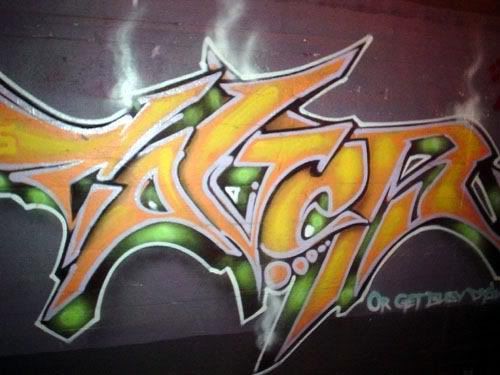“The whole art form is based upon lettering...[breaking it] from its classical form. You don’t want to lose the basis of the letter, but you want to lose the letter.” --Bomb It (documentary)
Possible thesis: the marriage of literary and visual elements in urban graffiti creates a dual level of comprehension, the visual for the masses and the literary for the selected.
A few weeks ago, we discussed the idea of a letter, or rather a word, transcending its literary purpose and serving an artful purpose. In my essay, I will try to analyze the literary and visual elements of graffiti in order to create distinctions between its audiences. It is true that graffiti has become a sort of main stream urban culture, but what's happening at the street level? For most people, the literary aspect of graffiti has been lost. Instead, they are left with visually stimulating pieces. But on a street level, at a deeply urban, inner-city, and even personal level, the words carry meaning. Not only do they transcend their "classical form" to express the artists individuality, but they create exclusivity. The artist prepares his piece so that he can filter his audience.
“The only thing you have is your name. You have to defend it.” --Bomb It (documentary)
The artist, or rather "Graffiti Writer", makes his tag--his personalized stamp, his own trademark--difficult to read so that he can preserve his own identity amidst mass consumption and forced advertisement. "The rituals revolve around making a place for one's self on the streets and helping create a sense of belonging in an indifferent environment" (Romotsky, Los Angeles Barrio Calligraphy). Graffiti is the writers way of simply saying that he exists.
My question to you is: is graffiti an effective way of preserving one's identity?

Because the writing at times is so illegible and the style so mundane to a layman, are these artworks effectually preserving the painters' identities to anyone but themselves? And if so, is that really a preservation of their identity?
ReplyDeleteIf we pretend, for a second, that identity exists in spite of outside factors then there would be no need to assert one's identity. However, if you claim that identity exists only because of others, then having a nonunique identity (at least in terms of art) is almost useless.
How do you feel about Banksy? I think his type of graffiti might preserve identity a little better.